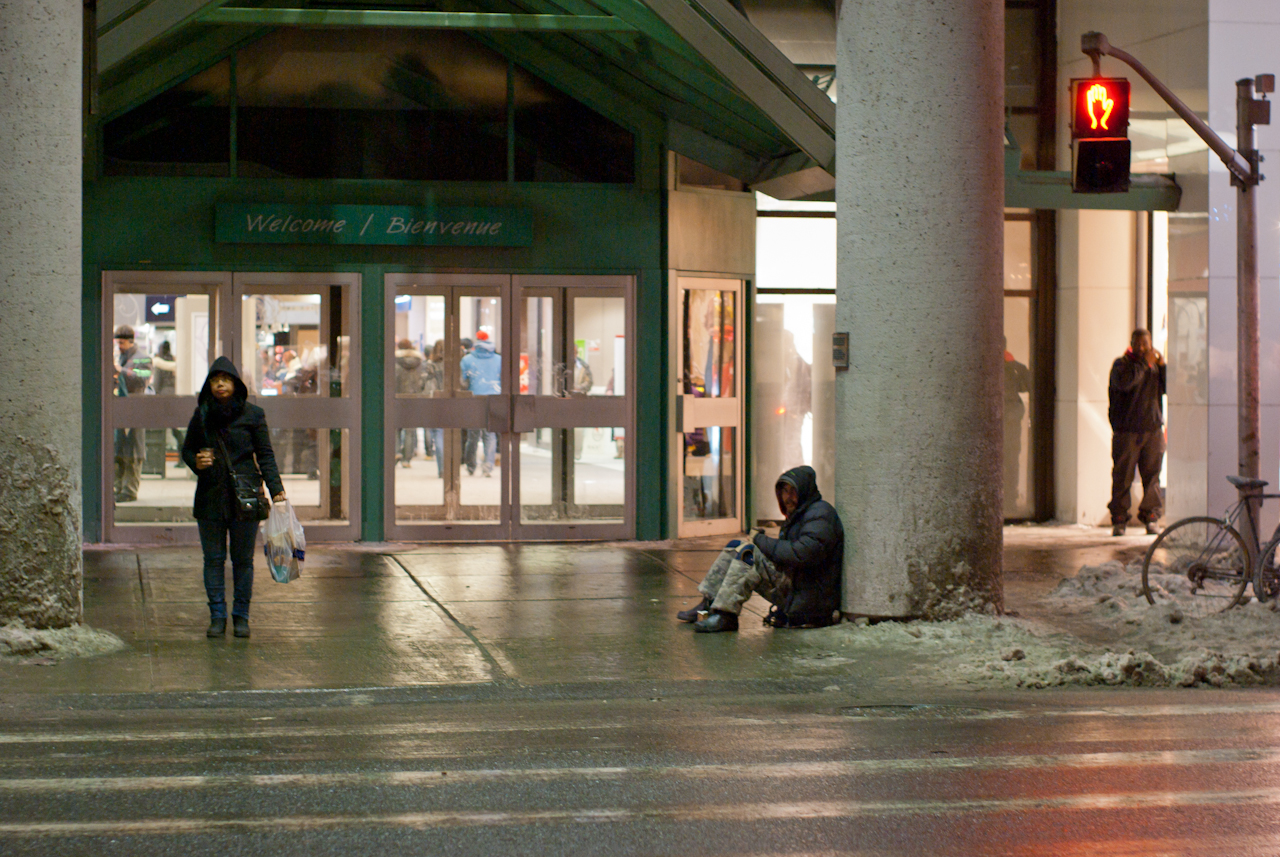Alliance to End Homelessness: Ottawa Needs a Larger Supply of Affordable Housing

Lee Pepper is a volunteer with the Alliance to End Homelessness Ottawa’s Communications Committee, a staff member at the Co-operative Housing Association of Eastern Ontario, and a Board member of the nonprofit housing provider CCOC.
The Alliance to End Homelessness Ottawa has been putting together an Annual Report on homelessness in our city since 2005.
Its 2016 report, which launched yesterday at City Hall, shows some areas of hope, but, overwhelmingly, paints a picture of a city in urgent need of more affordable housing, and of more supports and services to prevent Ottawans from becoming or remaining homeless.
Here are some key numbers from the report:
5.2% ↑
In 2016, 5.2% more people stayed in an emergency shelter in Ottawa than in 2015. As Ray Sullivan, Executive Director of the nonprofit housing provider CCOC, pointed out at the launch of the report, statistics on homelessness are only the tip of the iceberg of a crisis of poverty. For every person who sleeps in a homeless shelter, there are many others who couchsurf with friends after losing their homes, who are forced to choose between paying their rent and buying groceries, and who struggle to afford housing on the meagre rates of Ontario Works or the Ontario Disability Support Program.
31.2% ↑
From 2015 to 2016, there was a 31.2% increase in the number of women over 60 who stayed in a shelter. This points to a lack of other options and services for older women that address the complex intersections of aging, mental health, ability, addiction, and more. However, a former convent in Westboro is currently being redeveloped into 42 supportive housing units for women. This building, managed by Cornerstone Housing for Women, aims to be a healing space and a welcoming home for women who have been homeless or are at risk of homelessness.
347
On an average night in Ottawa in 2016, 347 individuals were placed in off-site motels. A total of 879 families accessed emergency shelter in 2016, a 12.5% increase from 2015. Individuals in families now account for over half of all bed nights used within Ottawa’s shelters, and there is a critical shortage of affordable housing units to accommodate families, particularly larger families. At the launch of the report, Wanda Macdonald, CEO of Pinecrest-Queensway Community Health Centre, commented that large families often face pressure to split up, since it is so difficult for them to find homes.
10,052
As of December 31st, 2016, there were 10,052 households on Ottawa’s central waiting list for affordable housing. According to the Social Housing Registry of Ottawa, which manages the waiting list, the wait time for subsidized housing varies, but can be 5 years or more.
Statistics on homelessness are only the tip of the iceberg of a crisis of poverty. For every person who sleeps in a homeless shelter, there are many others who couchsurf with friends after losing their homes, who are forced to choose between paying their rent and buying groceries, and who struggle to afford housing on the meagre rates of Ontario Works or the Ontario Disability Support Program.
 At the launch of the report, speakers emphasized that homelessness should not be seen as an isolated issue, but as part of a larger crisis of poverty, economic inequality, and housing affordability.
At the launch of the report, speakers emphasized that homelessness should not be seen as an isolated issue, but as part of a larger crisis of poverty, economic inequality, and housing affordability.
It is clear that Ottawa needs a larger supply of affordable housing, and that we need to do better at maintaining the social safety net that prevents anyone from becoming homeless. With new funding in the recent federal budget for housing, and a growing understanding of the interconnections among housing, health care, and other social services, there is reason to be optimistic.
However, the Alliance’s report provides a critical look at where we stand today, and demonstrates all too well that there is much work to be done.








